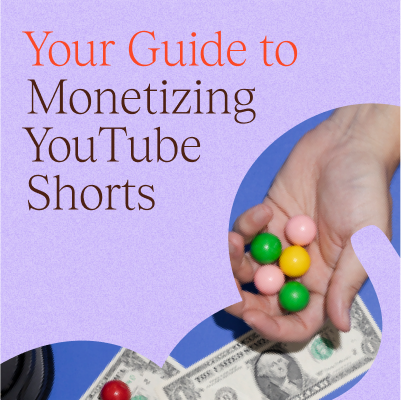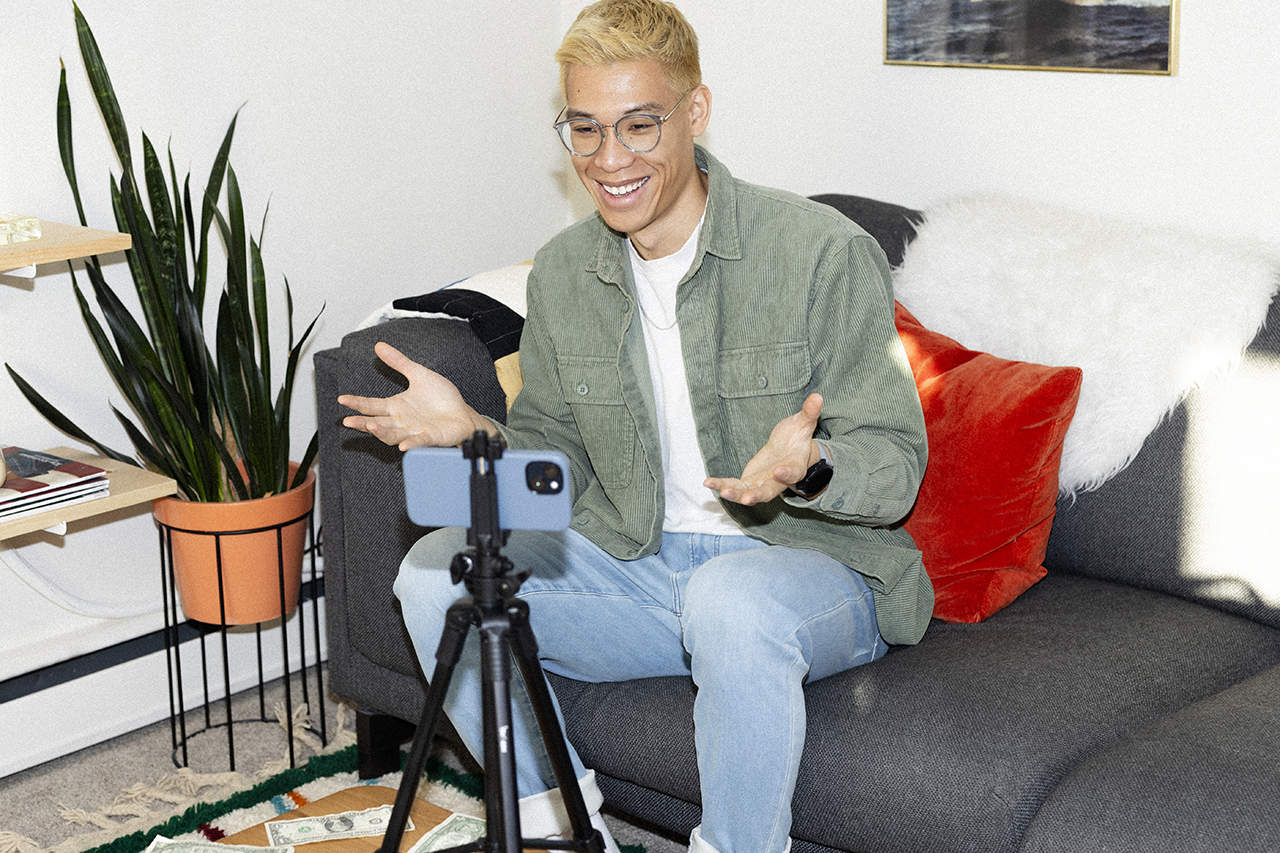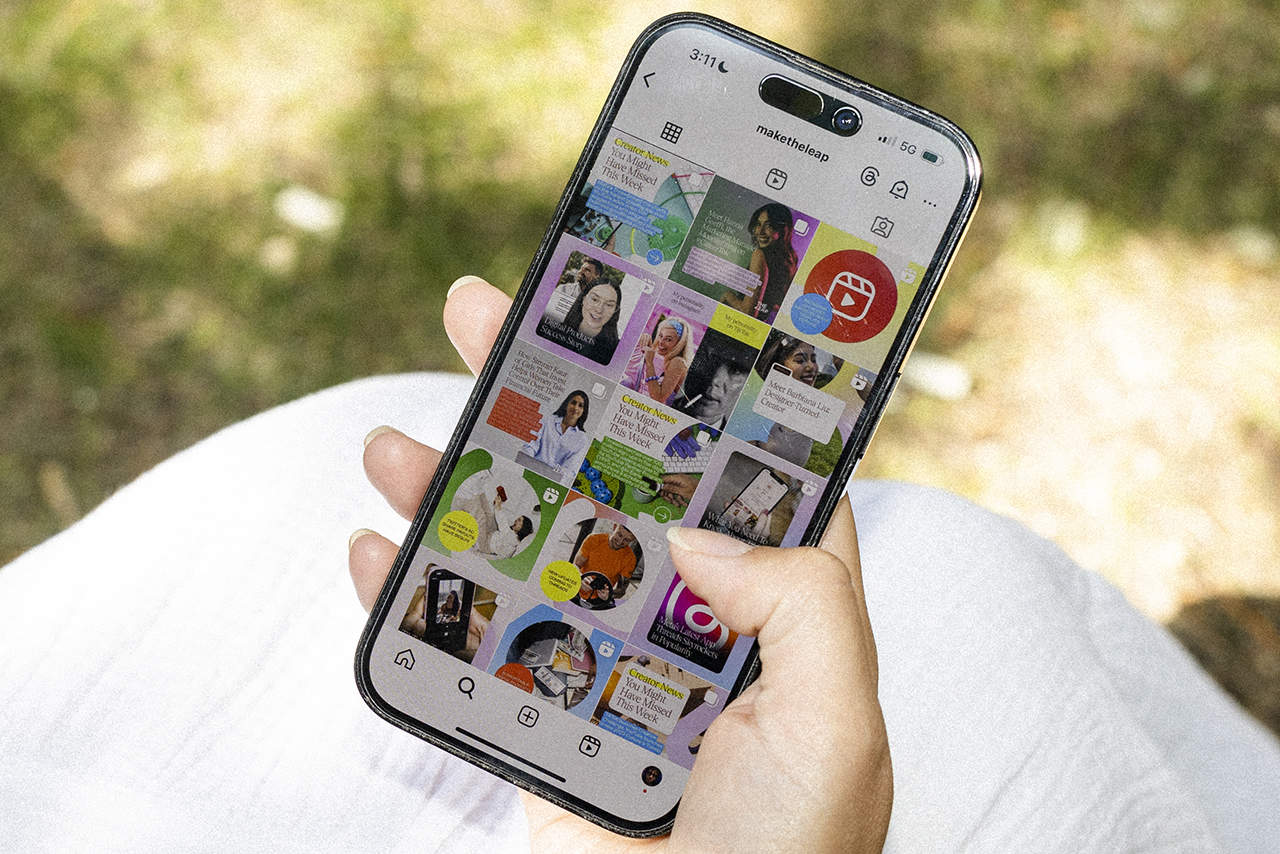Every TikTok creator’s worst nightmare is becoming more real. On Wednesday, the U.S. House of Representatives passed a bill that requires ByteDance — the Chinese parent company of TikTok — to sell the social media platform or face a ban in the country. So, what does this mean for the creators who rely on TikTok to make a living?
With over 150 million monthly active users in the U.S., TikTok is among the most popular social media platforms in America. Since the app’s launch in 2018, it has changed the lives of thousands of creators who have leveraged the platform to earn money. For many creators, a TikTok ban would mean losing not only their hard-earned audience, but also a source of income.
Worried about TikTok getting banned and wondering what you should do? We’ve got you. This post is your survival guide for navigating a TikTok ban, with tips you can implement right away to protect your creator business.
How to prepare for a potential TikTok ban
A TikTok ban would be devastating for many creators who’ve spent months or even years growing their accounts on the platform. However, there’s still plenty of opportunity out there for you to continue earning an income online — and now’s the time to grab it.
Here are a few things creators can do right now to prepare for a potential TikTok ban:
- Start owning your audience (with an email list)
- Diversify your social media presence
- Diversify your income streams
Start owning your audience (with an email list)
A potential TikTok ban means creators would lose the audiences they’ve spent days — and in some cases, years — growing. This means that some TikTok creators would find themselves essentially back to square one, having to build a new audience entirely from scratch. Ouch!
The potential TikTok ban is a reminder that your social media followers are a “rented” audience, and that you don’t have full control over this creator-audience relationship. The truth is there’s always a certain level of risk with social platforms. Even if it isn’t an outright TikTok ban, your account could get hacked, and the algorithm could change (sometimes against your favor). That’s why as a creator, it’s important to move from having a “rented” to an “owned” audience.
A great way to start owning your audience is to build an email list. This gives you a direct line to connect with your audience, even if TikTok is banned.
Click here to start building your email list with The Leap today, for free.Follow these tips to start:
- Define your target audience if you haven’t already. Start by asking yourself a few simple questions, like “What demographic characteristics describe my ideal audience (i.e. age, gender, location)?” or “What are my audience’s goals, interests, and values?”
- Choose an email marketing software for managing and connecting with your subscribers.
- Set up an opt-in form to collect email addresses from your audience. You can easily do that with The Leap’s subscription form feature.
- Offer lead magnets (or freebies) such as mini-courses, guides, and templates in exchange for your audience’s email. By giving away valuable free resources, you’re more likely to fast-track your email list growth. And with The Leap’s AI-powered authoring tool, you can generate lead magnets in a snap!
- Promote your newsletter by leveraging your social content. Direct your audience to subscribe to your email list and/or download your lead magnets.
- Engage and nurture subscribers by sending out regular emails with valuable insights, exclusive tips, or early access to exciting content or announcements.
For more pro tips on how to build an email list, take this free mini-course taught by creator Millie Adrian!
Diversify your social media presence
If you want to prepare for a TikTok ban, you need to create a safety net for yourself. This means not putting all your eggs in one basket (i.e. your TikTok account). While TikTok is a powerful social media app in terms of audience reach and engagement, there are similar platforms out there where you can build an audience and ultimately monetize them.
To diversify your online presence, start exploring other short-form video platforms like YouTube Shorts and Instagram Reels (if you haven’t already!). You can begin by uploading your video content across apps, on TikTok in addition to YouTube Shorts and Instagram Reels. Once you’ve started gaining some followers and likes on these other platforms, you can grow your audience and engagement by posting videos exclusive to each of your channels, so your followers will have no choice but to follow you across apps in order to keep up. Smart, right?
Here’s a quick checklist of things you can start doing today:
- Post content on other platforms like YouTube Shorts and Instagram Reels, to build up your following elsewhere.
- Start sharing with your TikTok audience where else they can find you, whether that’s Instagram, your newsletter, or another channel.
- Back up your TikTok content by downloading all your videos on the platform.
- Repost or repurpose your TikTok content for other social media channels.
Get our YouTube Shorts Monetization Guide for more tips on making money with YouTube Shorts.
Diversify your income streams
Besides diversifying your online presence, TikTok creators should look into additional and alternative income streams, just in case this ban ends up happening.
Brand deals remain one of the most popular ways for TikTok creators to earn an income. However, this particular stream of income relies heavily on your follower count and engagement rate data. A ban would effectively wipe both these metrics from the internet, meaning brands would have no data on which to make a deal, and you’d have no leverage to negotiate the income you think you deserve.
Besides, if TikTok does get banned, creators who’ve been monetizing with the app’s monetization features — like the Creator Rewards Program (formerly Creativity Program) or LIVE Gifts — could risk losing these sources of income overnight.
A way to get around this is to diversify your income streams, so you’re not 100% reliant on brand partnerships or TikTok’s own monetization tools. There are many other ways to monetize your audience directly and earn an income as a creator. Here are just some ideas:
- Sell digital products
- Offer consultations or coaching sessions
- Monetize memberships and subscriptions
Sell digital products
A digital product is anything you can sell online as a downloadable file — think mini-courses, templates, guides, and ebooks. Not only are digital products much cheaper and easier to produce and deliver than physical merchandise, but they’re also a stellar source of passive income.
Essentially, a digital product only needs to be created once. From there, customers can purchase copies over and over. You won’t have to worry about replenishing your inventory or shipping logistics, since your customers would simply be downloading a copy of your product to their device. Easy peasy!
Click here to start creating and selling digital products with The Leap. It’s free!Just like your content, your digital products live online, making them accessible for anyone worldwide to browse and buy. With no constraints of a physical store or shipping limitations, your digital products can reach potential customers around the world.
Interested in creating and selling your own digital products? Keep these beginner tips in mind:
- Do some research and figure out what digital product your audience might need. Is it a mini-course or tutorial on a certain topic? You can also scope out the competition by finding out what products other creators in your niche offer.
- Create your digital product. Don’t know where to start? The Leap’s AI-powered digital product builder can help you generate product ideas and even comprehensive drafts, enabling you to create engaging digital learning products — like mini-courses and guides — in minutes.
- Set up your creator store. You can easily set up your online storefront on The Leap. When you use The Leap to create your digital products, you’ll get a sales page automatically generated and added to your Leap store.
- Promote your digital product through content, via your social platforms, email newsletter, and other marketing channels. Direct your audience to the right link to purchase your product.
Take this free mini-course to learn how to research and plan what digital products you should sell.
Offer consultations or coaching sessions
Are you an expert in wellness and nutrition? Or perhaps you’re a marketing guru or design wiz? Maybe you’re a relationship coach? Whatever your niche is, you can monetize your knowledge and expertise by offering consultation calls or coaching sessions to those interested in learning from you. These 1:1 appointments allow you to give personalized attention tailored to your clients’ specific needs and goals, as well as to share immediate feedback with them.
You may also consider offering micro-consulting for free or a small fee, sharing advice, giving feedback, or answering any questions your audience may have. Not only is this an accessible alternative to pricier consulting services, but it also allows prospects to see if working with you is a good fit.
Use The Leap to offer micro-consulting and sell coaching sessions. It’s free!Check out these tips to start monetizing through consultation and coaching calls:
- Define your niche if you haven’t already. Think about what specific knowledge or skills you have that others would be willing to pay for.
- Establish yourself as an authority in your niche by showcasing your expertise through your content, and eventually testimonials from satisfied clients.
- Set your pricing based on factors such as your level of experience, the value you offer, and market demand. Research what other consultants or coaches in your niche are charging.
- Offer free or mini-consultations to potential clients as a way to showcase your expertise and build rapport. You can easily offer free or mini-consulting and sell paid coaching sessions using The Leap.
Monetize memberships and subscriptions
A membership site or subscription provides exclusive content to members who pay a monthly or annual fee for extra perks. These perks can include early access to promotions and announcements, bonus content, members-only live streams and more. If you have an engaged audience, this could be a great way to generate income online.
Sounds like a great option for you? Get your membership off the ground by following these tips:
- Identify your target audience and what type of content they’re interested in. Tailor your membership offering to meet the needs and preferences of your audience.
- Create high-quality content that provides value to your subscribers. Offer exclusive content such as behind-the-scenes videos, uncensored interviews, special Q&As that can’t be accessed elsewhere.
- Choose a membership platform that best suits your needs and budget. Some examples include Patreon, Substack, and Thinkific.
- Create different membership tiers with varying benefits and price points to appeal to a range of audiences.
Will the TikTok ban happen?
As the TikTok bill now goes to the Senate, the verdict is still up in the air as to whether the app will be banned from the U.S. for good. While we all wait on the edge of our seats to see what will happen, it’s a great time for content creators to begin preparing for the possibility of a life without TikTok. Sure, that means putting in a little more time and effort now, but who knows? You may reap the benefits tenfold, whether TikTok is banned or not.
Want to future-proof your creator business? Start diversifying your income streams and owning your audience using The Leap’s AI-powered digital product builder and email list building features.

Start monetizing your audience with The Leap, your all-in-one creator store.
TikTok ban FAQ
Is TikTok getting banned?
The U.S. House of Representatives has voted with a big majority (352-65) to pass a bill requiring TikTok’s Chinese parent company ByteDance to sell the app or face a nationwide ban. The bill now goes to the Senate, and its future is unclear.
Who owns TikTok?
TikTok is owned by China-based tech giant ByteDance.
How can creators prepare for a TikTok ban?
A TikTok ban would hit hard for creators who’ve put in a lot of time building their accounts on the app. But don’t worry, there are still many ways for you to make money online. Here are a few tips to help you prepare for a potential TikTok ban:
- Diversify your social media presence. For example, start exploring other video-sharing platforms like Instagram Reels and YouTube Shorts.
- Start owning your audience (with an email list). This means moving your “rented” audience on TikTok to your email list, so you have full control of your creator-audience relationship. Even if TikTok gets banned, you’d still have a direct line of communication with your audience.
- Diversify your income streams. If you’ve been relying on brand partnerships or TikTok’s own monetization tools, now’s the time to tap into other revenue streams. These might be selling your own digital products, offering consultations or coaching sessions, or monetizing memberships.

Create and sell digital products in minutes using The Leap!
Follow The Leap on TikTok, Instagram, and YouTube for the latest creator news. We also make a newsletter.
Further reading
- 12 of the Best Ways To Make Money Online as a Creator
- How To Build an Email List in 6 Easy Steps
- 15 Digital Product Ideas To Sell for Every Niche
- How To Make Passive Income Selling Digital Products
- TikTok vs. YouTube Shorts vs. Instagram Reels: Which One Makes You Money?
This article was originally published in March 2023, and updated in March 2024 with additional information.






